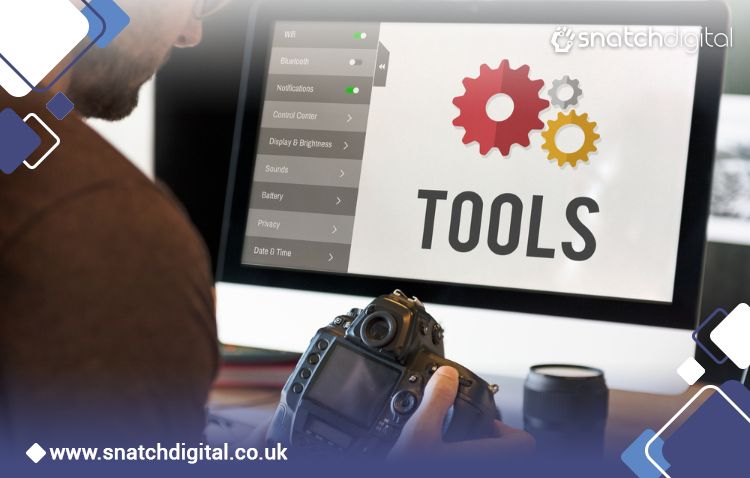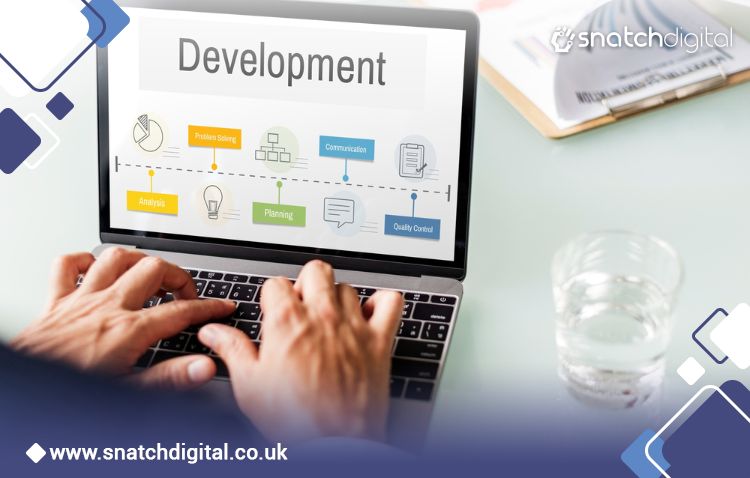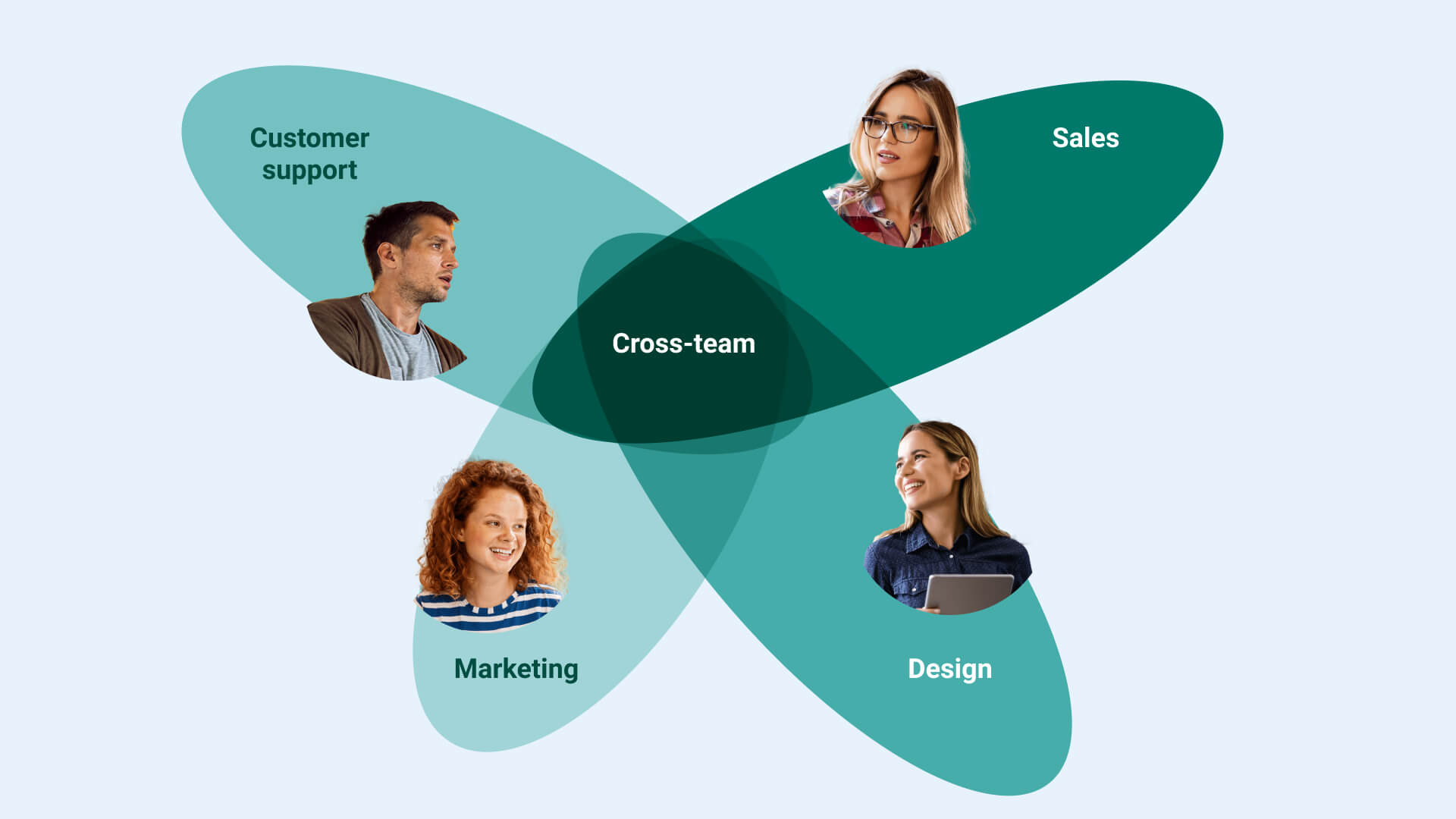Exploring the Landscape of Product Development Tools
First of all, you should know Product development tools are software applications that help businesses create and manage products from ideation to launch. There is a wide variety of product development tools available, each with its own strengths and weaknesses.
In the ever-evolving realm of product development tools, navigating the landscape of tools and software is crucial for success. These tools serve as the backbone, streamlining processes and enhancing collaboration. One standout example is Autodesk Fusion 360, a comprehensive tool embraced by industry giants like Tesla. Fusion 360 integrates design, engineering, and manufacturing, fostering seamless collaboration and innovation.
Additionally, tools like Jira and Trello empower teams to manage tasks efficiently. As companies traverse the product development journey, leveraging cutting-edge tools becomes a strategic imperative, ensuring a competitive edge and the realization of groundbreaking ideas. Explore the expansive array of product development tools, propelling your projects to new heights of efficiency and creativity.
Choosing the Right Product Development Software
Selecting the optimal product development software is a pivotal decision that can profoundly impact the success of a project. Among the array of choices, SolidWorks stands out as an industry-leading solution. Embraced by renowned companies like SpaceX, SolidWorks offers robust 3D modeling and simulation capabilities, fostering innovation and precision in product development tools. The choice of software should align with specific project needs, considering factors like collaboration features, scalability, and compatibility with existing tools. Siemens Teamcenter, another notable software, exemplifies seamless collaboration and comprehensive product lifecycle management.
Making the right choice empowers teams to streamline workflows, enhance communication, and ultimately bring exceptional products to market. As businesses navigate the dynamic landscape of product development, strategic software selection emerges as a cornerstone for success, influencing efficiency, collaboration, and the realization of groundbreaking ideas. Choose wisely, and unlock the full potential of your product development endeavors.
Moreover, Choosing the right product development software (PDS) is a crucial decision that can significantly impact the success of your product development process. With a wide range of options available, it's essential to carefully evaluate your specific needs and requirements to find the best fit for your organization.
We suggest that you choose the right product development software. These 10 guides can help you navigate the selection process and make an informed decision:
1. Define your product development process
2. Assess your team's skills and expertise
3. Consider your budget and pricing models
4. Evaluate core features and functionalities
5. Ease of use and user interface
6. Scalability and adaptability
7. Security and data protection
8. Vendor reputation and customer support
9. Free trials and demos
10. Seek feedback from potential users
Remember, choosing the right Product Development software is an investment in your product development process and the success of your product. By carefully considering your requirements, evaluating software options, and involving your team in the decision-making process, you can select the best tool to streamline your workflow, enhance collaboration, and bring your product vision to life.

Project Management Tools for Streamlined Development
Efficient project management is crucial for streamlined product development, and utilizing top-notch tools can make all the difference. Asana, a widely adopted project management tool, has proven instrumental in enhancing collaboration and productivity. With features tailored for project planning, task tracking, and team coordination, Asana has been embraced by companies like Airbnb for its intuitive interface and comprehensive project oversight.
Jira, developed by Atlassian, is another powerhouse in project management, especially favored in the software development realm. Its flexibility and adaptability make it a go-to choice for tracking development tasks, managing sprints, and ensuring transparency across teams. Recognized for its role in projects at Spotify, Jira contributes to agile development practices and efficient project execution.
Selecting the right Product Development Tools is pivotal for fostering communication, meeting deadlines, and maintaining project visibility. As companies strive for excellence in their product development endeavors, incorporating tools like Asana and Jira can significantly contribute to a streamlined and successful process, ensuring that projects progress seamlessly from ideation to market launch.
Prototyping Software: Enhancing Product Visualization
Prototyping software plays a pivotal role in product development tools, offering a dynamic platform to enhance product visualization and iterate designs efficiently. Figma, a leading prototyping tool, stands out for its collaborative features and real-time editing capabilities. Widely adopted by design teams, Figma has been integral to the creative processes at companies like Uber, facilitating seamless collaboration and rapid prototyping.
Another standout is Adobe XD, known for its user-friendly interface and robust design and prototyping functionalities. Used by industry giants like Microsoft, Adobe XD streamlines the prototyping phase, allowing designers to create interactive and realistic prototypes, fostering a more comprehensive understanding of the final product.
Prototyping software allows development teams to create mockups and interactive models, aiding in design validation and user feedback incorporation. Through tools like Figma and Adobe XD, companies achieve a higher level of precision and clarity in their product development journey, ensuring that the envisioned product aligns seamlessly with user expectations.
Version Control Systems: A Necessity in Product Development
In the dynamic realm of product development tools, version control systems stand out as an indispensable tool, ensuring the systematic management of code changes and fostering collaborative workflows. Git, a prominent distributed version control system, plays a pivotal role in this landscape. Renowned companies like Google rely on Git for its decentralized architecture, enabling developers to work concurrently on the same codebase efficiently. This approach aligns with the industry's best practices, allowing for seamless collaboration and efficient tracking of changes.
A notable example of the utilization of version control systems is Google's reliance on Git for numerous projects. Google's extensive use of Git reflects the significance of version control in managing the complexities of large-scale software product development tools. Git provides a structured and organized approach to versioning, allowing development teams to navigate through the intricacies of code changes effectively.
Furthermore, platforms like GitHub, embraced by industry leaders such as Microsoft, enhance Git's capabilities. Microsoft leverages GitHub to host repositories centrally, providing a collaborative hub for developers. GitHub not only facilitates efficient version control but also enhances transparency, making it easier for teams to collaborate on intricate coding projects.
In essence, version control systems, exemplified by Git and accentuated by collaborative platforms like GitHub, serve as a foundational element in product development tools. They contribute to the reliability, scalability, and integrity of software projects, enabling organizations to navigate the complexities of code management with precision and efficiency.

Collaboration Software for Cross-Functional Teams
Collaboration software emerges as a cornerstone in the realm of product development tools, particularly for cross-functional teams engaged in intricate projects. Among the notable tools, Slack stands out as a leading platform, renowned for enhancing communication and collaboration within teams. Adopted by industry giants like IBM, Slack provides a centralized hub for real-time messaging, file sharing, and seamless integration with other essential tools, fostering a collaborative environment for cross-functional teams.
IBM's utilization of Slack illustrates the effectiveness of collaboration software in streamlining communication across diverse teams. With features such as channels for specific topics, direct messaging, and integration capabilities with project management tools, Slack facilitates smooth information exchange among team members. This not only accelerates decision-making processes but also promotes transparency across different functional units.
Furthermore, Microsoft Teams, a collaborative platform integrated with the Microsoft 365 suite, has gained prominence in fostering cross-functional teamwork. Companies like Accenture leverage Microsoft Teams to bring together diverse skill sets and expertise seamlessly. The platform offers a comprehensive set of features, including video conferencing, document sharing, and task management, creating an integrated space for cross-functional collaboration with product development tools.
Product Design Software: Bringing Concepts to Life
Product design software plays a pivotal role in the product development tools landscape, serving as the catalyst that transforms conceptual ideas into tangible realities. Autodesk Fusion 360 stands out as an exemplary tool in this realm, offering a comprehensive suite of design and engineering capabilities. Widely embraced by industry leaders like SpaceX, Fusion 360 enables teams to collaboratively create 3D models, simulate designs, and iterate rapidly, streamlining the product development tools journey.
SpaceX's utilization of Autodesk Fusion 360 exemplifies the software's prowess in the aerospace sector. Engineers at SpaceX leverage Fusion 360's parametric modeling, simulation, and cloud-based collaboration features to refine intricate designs for spacecraft and rocket components. The software's versatility allows for seamless integration of mechanical, electrical, and manufacturing aspects, fostering a holistic approach to product design.
Moreover, SolidWorks, another prominent player in the product design software arena, has made significant strides in empowering companies to bring their concepts to life. Employed by industry giants like Tesla, SolidWorks offers powerful 3D modeling tools and simulation capabilities. Tesla utilizes SolidWorks to design intricate components of electric vehicles, ensuring precision and efficiency in the product development process.
In conclusion, product design software is a linchpin in the journey from concept to creation. Autodesk Fusion 360 and SolidWorks, exemplified by their adoption by industry leaders like SpaceX and Tesla, showcase the transformative impact of these tools in turning innovative ideas into tangible, market-ready products.
Roadmap Tools for Effective Product Planning
Navigating the complex terrain of product development tools demands strategic planning, and roadmap tools emerge as indispensable companions on this journey. One such powerhouse in this realm is Aha!, a widely acclaimed platform embraced by giants like Microsoft. Aha! facilitates effective product planning by providing a robust framework for visualizing and communicating product roadmaps. Microsoft, leveraging capabilities, meticulously plans and executes its product releases, ensuring alignment with organizational goals and customer expectations.
empowers teams to collaboratively construct and refine product roadmaps, fostering a transparent and agile planning process. Microsoft, renowned for its innovation in software and technology, utilizes features to orchestrate the development trajectory of products like Windows and Office Suite. Through this, Microsoft can seamlessly prioritize features, align development with market needs, and communicate a clear vision to stakeholders.
In the ever-evolving landscape of technology, product development tools planning is a dynamic dance, and takes center stage, setting the rhythm for effective and strategic development. As Microsoft exemplifies, integrating into the product development toolkit enhances the orchestration of plans, ensuring that the roadmap not only guides the journey but propels the product toward unprecedented success.
Testing and Quality Assurance Software in Development
In the realm of product development tools, the role of testing and quality assurance software is paramount, ensuring that products meet stringent standards and deliver unparalleled user experiences. Leveraging cutting-edge tools such as Selenium, renowned companies like Google navigate the intricate landscape of software testing with finesse. Google harnesses the power of Selenium to automate testing processes, enabling rapid feedback on software functionality and uncovering potential issues early in the development lifecycle.
Selenium stands as a testament to innovation in testing tools, providing an open-source framework for automating web applications. Google, synonymous with technological prowess, strategically integrates Selenium into its testing suite to validate the functionality, performance, and security of its diverse range of products. By incorporating Selenium, Google optimizes testing workflows, accelerates release cycles, and ensures the robustness of products such as the Chrome browser and Android operating system.
The synergy between Google and Selenium underscores the critical role of testing and quality assurance in the product development journey. As technology continually evolves, Google's commitment to leveraging advanced testing tools exemplifies how a comprehensive testing strategy is integral to delivering products that redefine industry standards.

Integrating Analytics Tools for Data-Driven Decisions
In the dynamic landscape of product development tools, integrating analytics tools emerges as a strategic imperative for data-driven decision-making. Companies navigating this terrain, such as Amazon, exemplify the transformative power of analytics tools in shaping product strategies. Amazon leverages robust analytics tools, including Google Analytics, to gain profound insights into user behavior, preferences, and market trends.
By harnessing the capabilities of Google Analytics, Amazon derives actionable intelligence that fuels informed decision-making across its vast product portfolio. The integration of analytics tools empowers Amazon to track website traffic, measure conversion rates, and assess the performance of marketing initiatives. This wealth of data enables Amazon to optimize user experiences, tailor product offerings, and stay ahead of evolving market demands.
The synergy between Amazon and analytics tools highlights the pivotal role of data-driven insights in steering product development. As companies increasingly recognize the value of analytics, the integration of such tools becomes synonymous with staying competitive and responsive to market dynamics. In conclusion, the strategic integration of analytics tools is not merely a technological choice but a fundamental driver of innovation and success in the ever-evolving landscape of product development tools.








